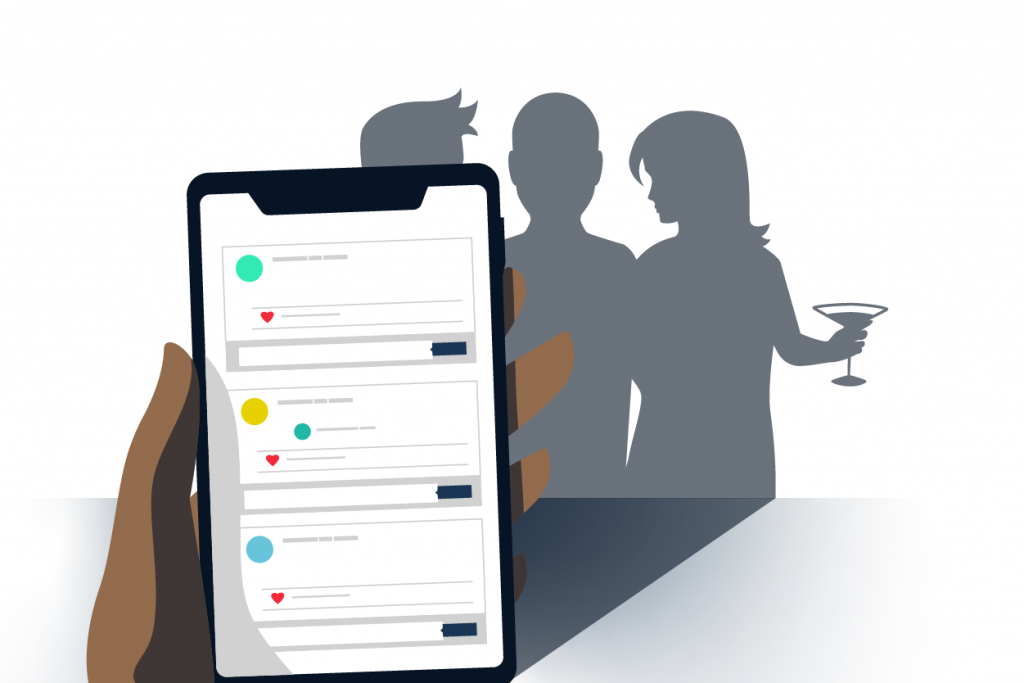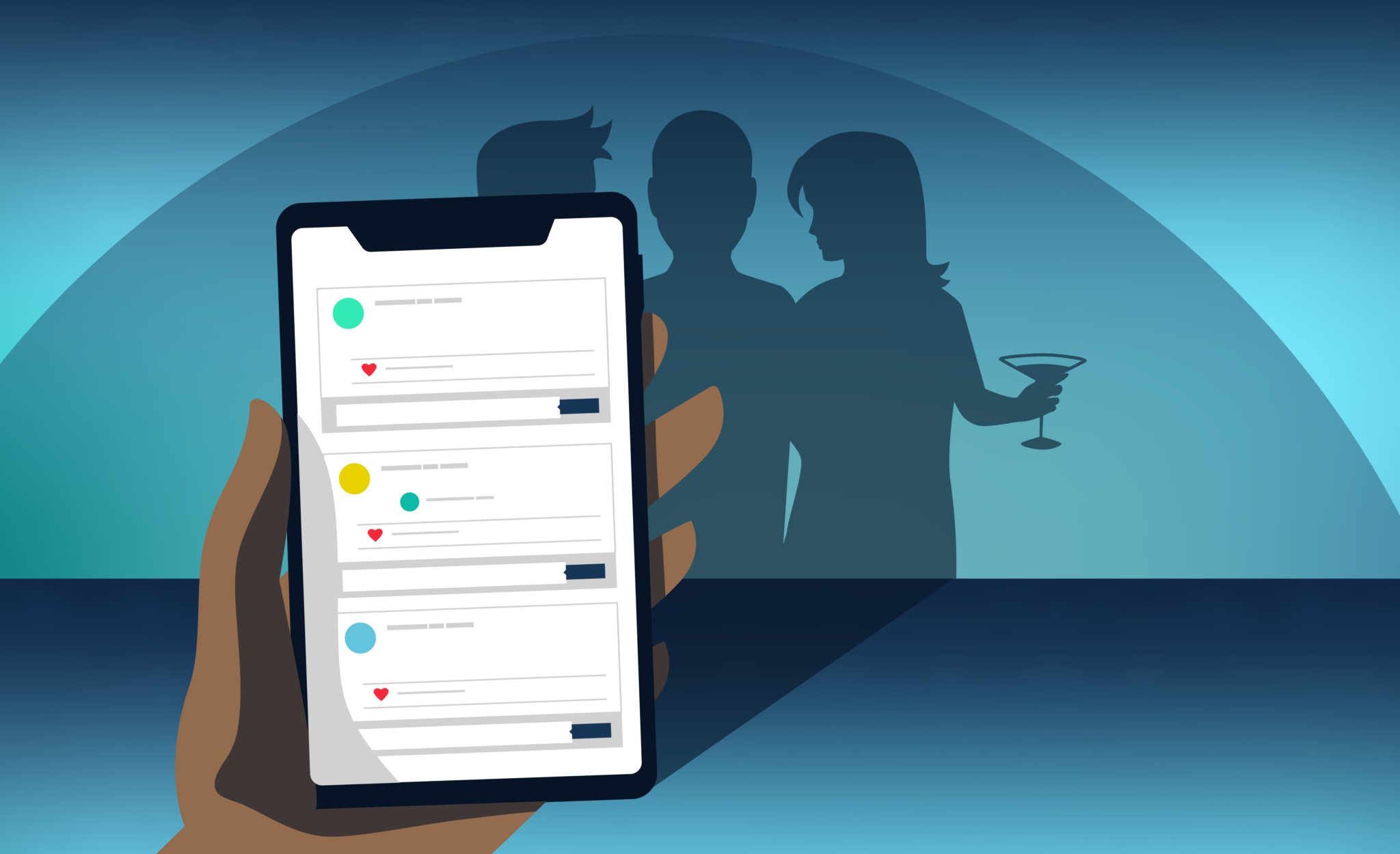
Synchronous and asynchronous learning may only be a letter apart, but they have vastly different meanings. These terms refer to the timebound nature of the learning event in question. They help us to understand whether learning will take place with a group at a set time, or whether we can tackle it at our own pace.
When you use them correctly, both learning approaches enhance a learner’s experience with learning technology.
And let’s be clear from the get-go, neither one is objectively better than the other. You should seek to find the right balance.
In this article, we’ll take a closer look at the definition of both kinds of learning. We’ll also go through the benefits of each approach and show you how they can be delivered through learning technology. Let’s get going!
The Etymology
To help understand these terms, let’s start at the very beginning. Both words contain ‘syn’. This is a Greek prefix which means ‘together’. However, ‘asynchronous’ has the prefix ‘a’, meaning ‘not’.
To benefit from synchronous learning, you need to be present at a set time, together with the rest of the group. If you miss a lecture, then you miss out. Asynchronous learning does not have that requirement. It’s learning that takes place at your pace.
Let’s break down the two terms further.
Synchronous Learning
Synchronous means existing or occurring at the same time. You’re likely familiar with Instagram Live. This is a great example of a synchronous event as every user is watching the livestream at the same time. Additionally, you can comment on the stream and interact with other users in real time.
The same goes for synchronous learning. This term refers to any learning event that is completed by a group of students at the same time. This typically includes classroom sessions, lectures, webinars, discussions, coaching and so on.
But where does online learning fit into this picture? Here’s what Training Industry have to say:
‘[Synchronous learning is] a form of online learning that occurs when learners and instructors are interacting in real-time, typically through delivery platforms, remote labs, distance learning technologies such as video conferencing and chat, or collaboration and social learning technologies.’
People often describe synchronous tools are as more interactive. This is largely due to the social nature of this learning approach. After all, it’s learning that happens ‘together’.
Let’s take a closer look at social learning to help us understand this.
Social Learning
Social learning is one of the main ways that we learn. This kind of learning encompasses all learning that takes place when we interact with or observe others.

In fact, according to the 70:20:10 model, 20% of all knowledge transfer happens through social learning. Without social interactions, we face a major gap in knowledge acquisition and knowledge retention.
Social learning works well with both synchronous and asynchronous approaches. However, research has shown that, generally speaking, synchronous tools are better at engaging learners and generating a culture of interactivity than asynchronous tools.
On a learning management system like Growth Engineering LMS, you can use certain tools to facilitate synchronous learning and reap the benefits.
Synchronous Learning Tools
‘Instant’ tools such as chat and video conferencing fall under this umbrella. Due to their very nature, synchronous tools are inherently interactive:
Classrooms, Webinars & Conferencing
Classroom events (whether virtual or face-to-face), lectures and webinars are great examples of synchronous learning. They are learning experiences that are completed together with a group of other students.
Learning management systems can be used to administer these events. Many platforms will come with a suite of classroom and webinar management features. This enables powerful blended learning experiences.
Live Chat
This tool enables quick and speedy communication between users through instant messaging. Users can see who’s online and send messages if they have a question or if they need to collaborate on a project.
Live Chat can also be used to provide real time feedback to colleagues, set up meetings or even just to share funny GIFs. This tool is great for facilitating effective communication and enhancing productivity!
Connecting With Subject Matter Experts (SME)
Every business has its share of subject matter experts (SMEs). These individuals are authorities on set topics.
On an LMS, you can create an Experts Area where these SMEs live. This is a list of colleagues you can reach out to for specialist knowledge.
Once again, this feature cuts down communication time and improves productivity. Additionally, it encourages a knowledge sharing culture and keeps intellectual capital within your company.
Live Streaming
Live streaming functionality is a tool that takes full advantage of mobile learning capabilities. On Growth Engineering Learning App, learners can live stream or broadcast video content within the social Clubs they’ve joined.
Clubs Live helps organisations to provide accessible and engaging user-generated learning experiences, all in real time! It can also be used to simulate a classroom environment without you having to physically meet in person.
Push Notifications
Synchronous learning can also be facilitated with push notifications. That way learners are alerted to what’s happening on their platform as soon as it takes place. For instance, each learner should receive a push notification when a new livestream begins.
The average smartphone user in the US receives 46 push notifications in a single day. Here’s hoping some of these are sent from your learning app!
Synchronous learning is often seen as more participatory and ‘active’ than asynchronous learning — which can sometimes be a lonely affair. As we’ve seen, higher levels of learner interactivity lead to higher levels of understanding.
Synchronous learning also has a few other advantages!
Benefits of Synchronous Learning
Synchronous learning comes with a myriad of benefits. Most of them arise from its instantaneous nature:
- Being able to communicate with other users and receive responses helps to boost productivity and build confidence. In fact, teams who communicate effectively can increase their productivity by as much as 25%!
- Synchronous tools help to facilitate team-based learning. And did you know that 75% of employers rate collaboration and teamwork as ‘very important’? They’re right!
- Furthermore, better collaboration has been shown to lead to higher retention rates and happier employees. Indeed, when Google For Work and Raconteur asked what changes would have the greatest impact on their organisation’s overall profitability, 56% of respondents ranked a collaboration-related measure as the number one factor.
- As synchronous learning takes place in real time, learners are more likely to engage with it. After all, it’s happening live in front of them. What’s more, they know if they don’t focus they could miss out on valuable information. According to Gallup, employees who are engaged are 27% more likely to report ‘excellent’ performance.
Disadvantages of Synchronous Learning
However, synchronous learning does come with its downsides:
- Synchronous learning events happen at a set time and in a set location (whether that’s in a lecture hall or on a Zoom meeting). If learners are unable to attend their knowledge intake will be affected. Furthermore, if learners have transportation or connectivity issues they may end up missing out through no fault of their own.
- Synchronous learning events are highly reliant on the quality of their instructor or the individual who is seeking to share their knowledge. Studies have shown that an inadequate teacher has more effect on performance than any other factor.
- When discussions take place (through classroom events, video conferences, social feeds or instant messaging) each learner will bring a different level of experience and knowledge to bear.
This can lead to imbalance, where the most knowledgeable get a chance to ‘prove’ what they already know, whilst others struggle to make meaningful contributions. Why does this matter? Well, employees who feel heard are 4.6x more likely to be empowered to perform at their best.
Now that we’ve covered synchronous learning, let’s move onto its counterpart!
Asynchronous Learning
As you can probably guess, asynchronous learning is the opposite of its synchronous counterpart. Let’s look to our friends at Training Industry again for their definition:
‘Asynchronous learning is an instructional design and delivery methodology that allows students to access content or participate in learning outside of the classroom and at their convenience, or independent of the instructor.‘
It tends to put learners at the centre of their learning experience and is considered more self-paced.
On an LMS, administrators design a learning path, equipped with clear descriptions, virtual badges, XP, quizzes, assessments and the like. Users then arrive at a later date and journey through the content as they please.
In other words, information is stored on your learning solution and users react to it at their convenience.
Asynchronous Tools
Unlike synchronous learning, asynchronous tools aren’t used in real time. Learners can access them as they please and consume content in multiple sittings. The result is a more flexible approach, as learners aren’t required to be in a set place at a set time.
Courses / eLearning

These make up the bread and butter of your learning solution. Instructional designers create courses for learners using their knowledge of learning theory and information provided to them by SMEs.
These courses can be accessed at any time. In most cases, learners can take a break part way through a course and return again later to finish where they left off.
These courses can be created using software like Growth Engineering Authoring Tool. They can include a variety of media formats. Examples include multiple choice quizzes, assessments, videos and PDFs. You name it and we can support it!
Pre-recorded Lectures / Webinars
Pre-recorded lectures and webinars can also be added to your learning management system library.
These benefit both sides of the learning relationship. As a teacher, you have the freedom to record learning content when you have the time. You’re not bound to sticking to the schedules of your students. Conversely, your students can watch the content when time frees up in their diaries.
Increased flexibility like this has been shown to produce greater job satisfaction and cost-effectiveness.
Social Feeds

A social feed is also what you would think of as a timeline. It mirrors what you see on social networking sites like Twitter, Facebook and LinkedIn. As such, this feature will feel familiar to many, which makes it easy for your learners to adopt in a learning context.
On a social feed, learners can post what they please, whenever they please. What’s more, any virtual rewards will appear as posts. These include actions like earning Badges for completing a course or levelling up on the platform. A social feed can help to build comradery amongst teams and ensure everyone is kept in the loop.
This is especially important with the increase in companies now working remotely. Over half of employees (52%) around the world now work from home at least once a week. As such, finding tools to keep them connected to their teams is incredibly important.
Uploaded Materials
On an LMS, you can upload materials (such as PDFs, slide decks, infographics, videos and so on!) for learners to complete when they can. Once again, this allows for increased flexibility.
You can also upload the same content in different media formats. Your learners are then free to choose what they consume.
Some users may gravitate to materials that they have to read. It’s been shown to improve brain connectivity and enable better comprehension. Whereas others may prefer video content. 91% of educational institutions agree that video increases student satisfaction.
As we’ve seen, asynchronous learning is a bit more convenient for learners. After all, they can complete it when they choose. Let’s take a look at a few more of its benefits!
Benefits of Asynchronous Learning
- As learners engage with asynchronous tools when they desire, there’s an increased sense of autonomy. According to Self-Determination Theory, autonomy is one of the the three core psychological needs that kickstart intrinsic motivation.
A study of around 1,400 healthcare workers found that increased autonomy produced greater job satisfaction and an increased likelihood of staying in their roles.
Furthermore, a 2017 study by the University of Birmingham found that employees with higher levels of autonomy at work reported greater levels of wellbeing and job satisfaction.
- The modern learner is always on the move. Asynchronous tools offer them increased freedom and flexibility. Nowadays learners are only able to dedicate around 24 minutes per week to training. This learning needs to be slotted in around all their other responsibilities. Asynchronous learning approaches help to make this happen.
- Asynchronous learning approaches often allow learners to structure their own learning journey. Alternatively, admins can create a structured training programme for users to follow. A lot of learners will prefer this structured approach, as it gives them clear guidance on what needs to be completed.
Disadvantages of Asynchronous Learning
Asynchronous tools don’t always get learners motivated or engaged:
- If learners don’t receive sufficient (or any!) feedback from peers or instructors, they could soon become discouraged and unmotivated. A lack of real time feedback can be detrimental to a learner’s morale. This then leads to a lack of job satisfaction.
Companies that regularly implement employee feedback experience 14.9% lower turnover rates. Some food for thought!
- It can be hard to get learners to interact when they’re not being asked to do so in ‘real time’. Some learners see asynchronous tasks as chores that take away from their actual work. This can lead to a lack of engagement and reduce the return on investment of your learning initiative.
- As asynchronous learning takes place when each individual learner decides, it can lead to a lack of interactivity. After all, each user will be learning at their own pace. It can be hard to match this up with other learners.
As a result, employees can feel a lack of connection with their colleagues. A survey of over 680 workers found that a lack of interaction was their biggest challenge while working from home.
How To Make Asynchronous Tools Interactive
Asynchronous learning’s biggest strength can also be its biggest weakness. It may be a more flexible approach to learning, but this also makes it easier to put off.

Making your online courses and resources compulsory is one surefire way to make sure your learners use them. But, as we all know, making something compulsory doesn’t necessarily make it more engaging.
Making the use of these tools compulsory is one definitive way to make sure learners do use them. But, as we all know, making something compulsory doesn’t necessarily make it engaging or motivating.
Adding gamification to your learning environment, on the other hand, can add this element of engagement.
Allocating XP and Badges to certain actions within an LMS is a way to avoid having to make completing your learning content ‘compulsory’ in the traditional sense.
Rather than stipulating that learners must complete a course or submit an assignment, learners are instead rewarded when they use the platform and interact with others. This reward can trigger the release of dopamine and other beneficial neurotransmitters.
That’s why the use of gamification in training has been shown to cause a 60% increase in employee engagement!
Final Words
As we said at the beginning, neither synchronous or asynchronous learning is better than the other. Each learner’s preference will be different. Some may prefer the interactivity of synchronous learning. Others will love the autonomy that comes with asynchronous learning.
You should seek to provide the best of both worlds. Limiting your learning programme to one approach limits its chances of success significantly. After all, we’ve seen that each approach also has a number of disadvantages.
However, if you can reap the benefits of both approaches, then success is sure to follow.
Would you like to learn more about creating the perfect balance between synchronous and asynchronous learning on your learning platform? Download our whitepaper The Ultimate eLearning Instructional Design Guidebook!








